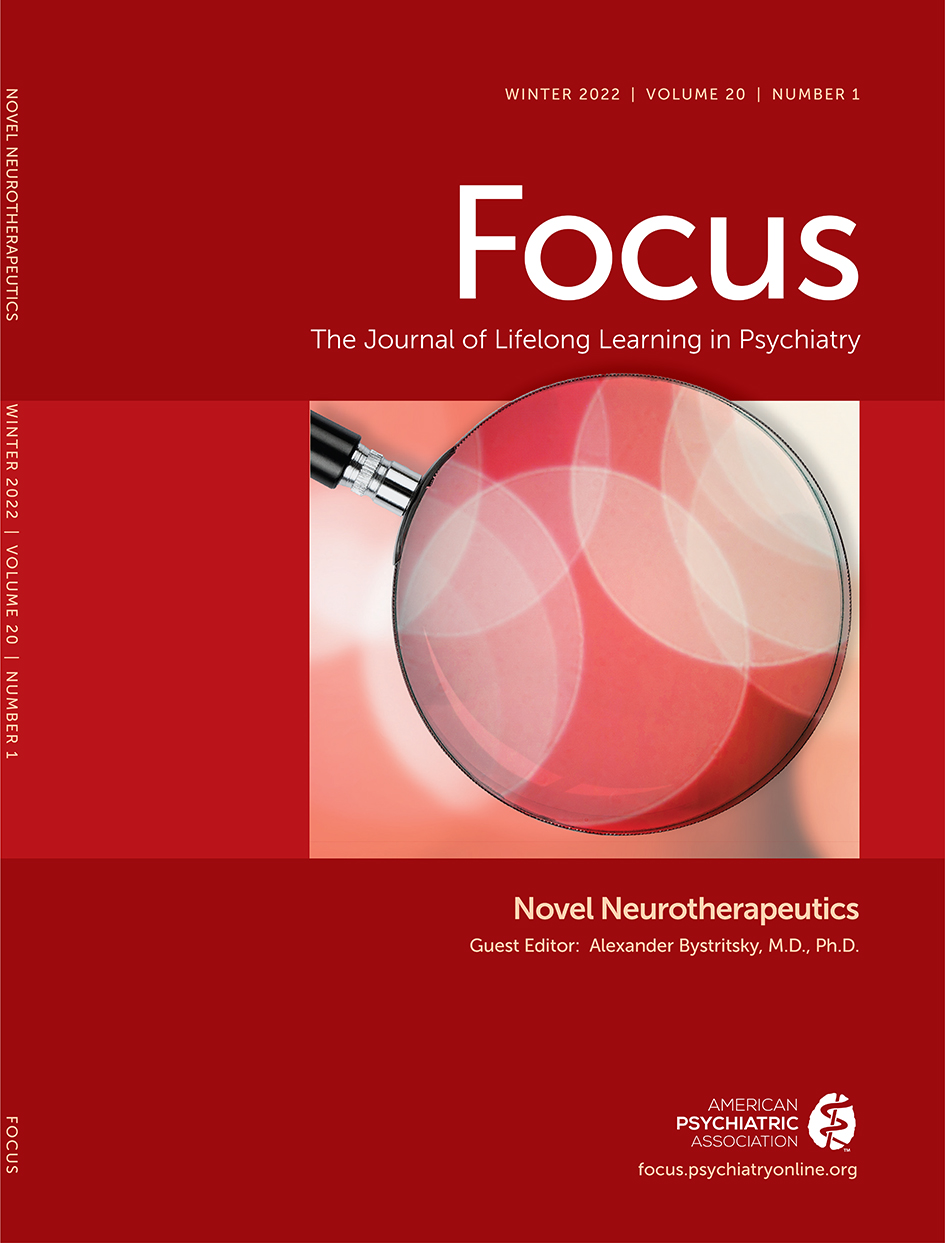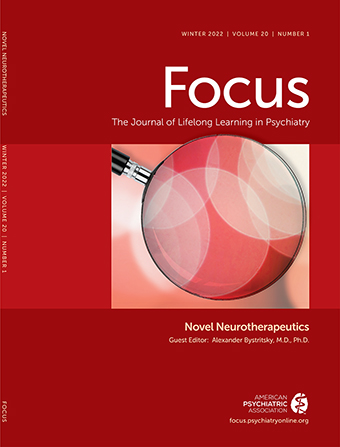Sonication of the Anterior Thalamus With MRI-Guided Transcranial Focused Ultrasound (tFUS) Alters Pain Thresholds in Healthy Adults: A Double-Blind, Sham-Controlled Study
Abstract
Background:
Methods:
Results:
Conclusions:
Introduction
Methods
Study Overview

Quantitative Sensory Thresholding (QST) — Outside of MRI Scanner
Transcranial Focused Ultrasound (tFUS)
tFUS targeting outside of the MRI.
Realtime tFUS Targeting Inside the MRI
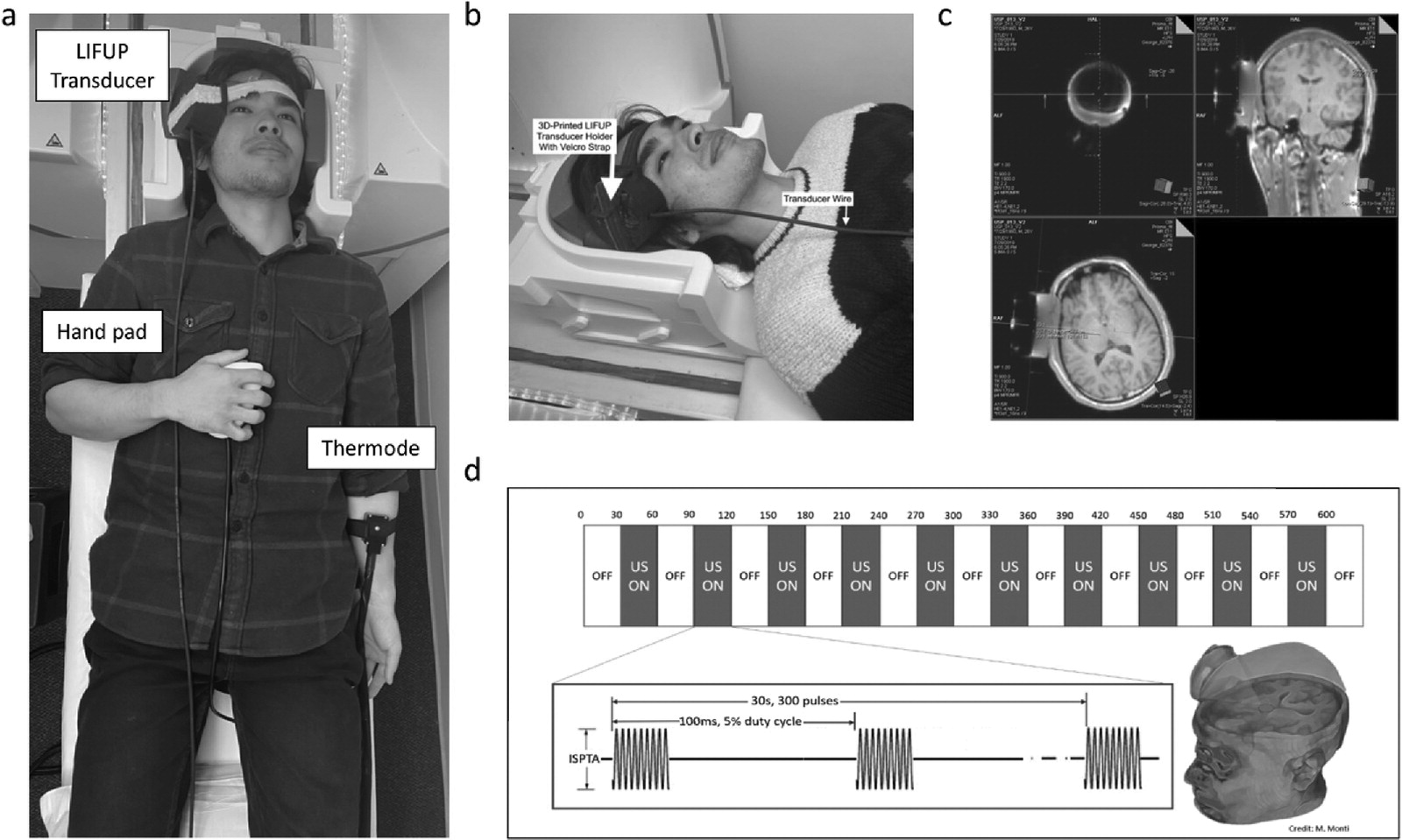
tFUS Parameters and Administration
Blinding
Statistical Analysis of Pain Data
Results
tFUS Safety
Location of the Sonication
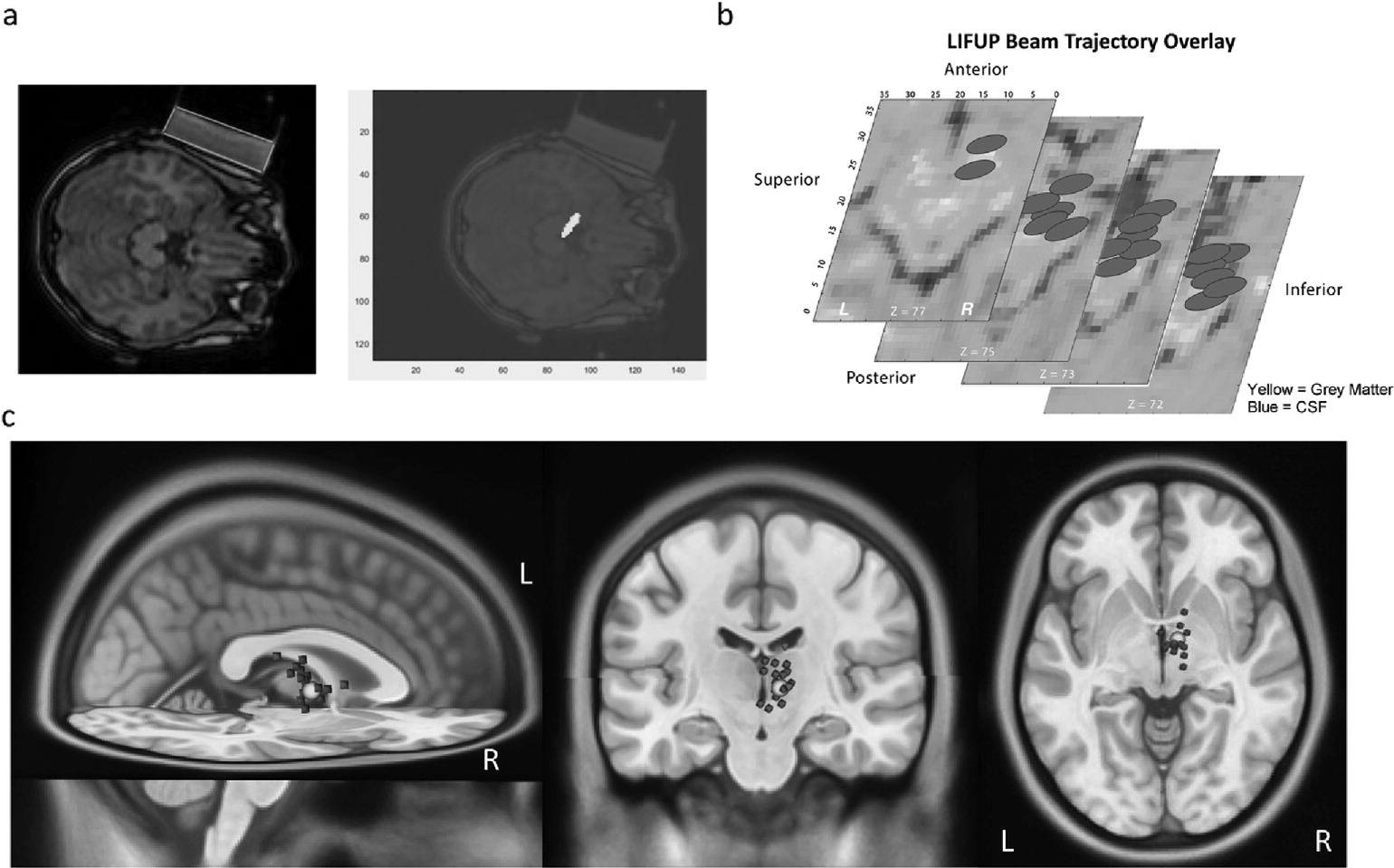
| MNI Vectors from Target (mm) | |||||||
|---|---|---|---|---|---|---|---|
| Subject # | Sonication On Target? | Pixels overlapping Target | mm3 overlapping Target | Distance (mm) of Focal Center from Target Center | X (Post. to Ant.) | Y (Left to Right) | Z (Inf. To Sup.) |
| 1 | Y | 17 | 71.825 | 11.38 | -2.85 | 4.89 | -9.87 |
| 2 | Y | 19 | 80.275 | 10.72 | -4.72 | 7.08 | 6.52 |
| 3 | Y | 6 | 25.35 | 13.61 | -3.78 | 6.49 | 11.35 |
| 4 | Y | 83 | 350.675 | 3.71 | -2.37 | 1.81 | 2.21 |
| 5 | Y | 55 | 232.375 | 6.33 | -1.77 | 1.96 | 5.75 |
| 6 | Y | 77 | 325.325 | 4.32 | -3.39 | 2.03 | -1.75 |
| 7 | Y | 72 | 304.2 | 6.29 | 3.3 | -4.57 | 2.79 |
| 8 | N | 0 | 0 | 14.72 | 13.83 | -3.25 | 3.83 |
| 9 | Y | 26 | 109.85 | 8.08 | -2.44 | -0.79 | -7.66 |
| 10 | Y | 14 | 59.15 | 11.26 | 3.11 | 8.79 | -6.32 |
| 11 | Y | 31 | 130.975 | 7.03 | 6.84 | -1.22 | 1.08 |
| 12 | Y | 17 | 71.825 | 12.25 | -8.11 | -3.04 | 8.66 |
| 13 | Y | 22 | 92.95 | 8.06 | -3.84 | -3.07 | 6.39 |
| 14 | Y | 91 | 384.475 | 1.34 | 0.87 | 0.39 | 0.94 |
| 15 | Y | 36 | 152.1 | 6.86 | -4.49 | 1.57 | -4.94 |
| 16 | Y | 28 | 118.3 | 6.01 | -2.41 | -1.22 | 5.37 |
| 17 | N | 0 | 0 | 21.06 | -13.67 | -2.5 | 15.83 |
| 18 | Y | 8 | 33.8 | 11.71 | -6.05 | 2.1 | 9.8 |
| 19 | Y | 88 | 371.8 | 0.76 | -0.11 | 0.24 | 0.71 |
Pre and Post tFUS Quantitative Sensory Thresholds (QST)
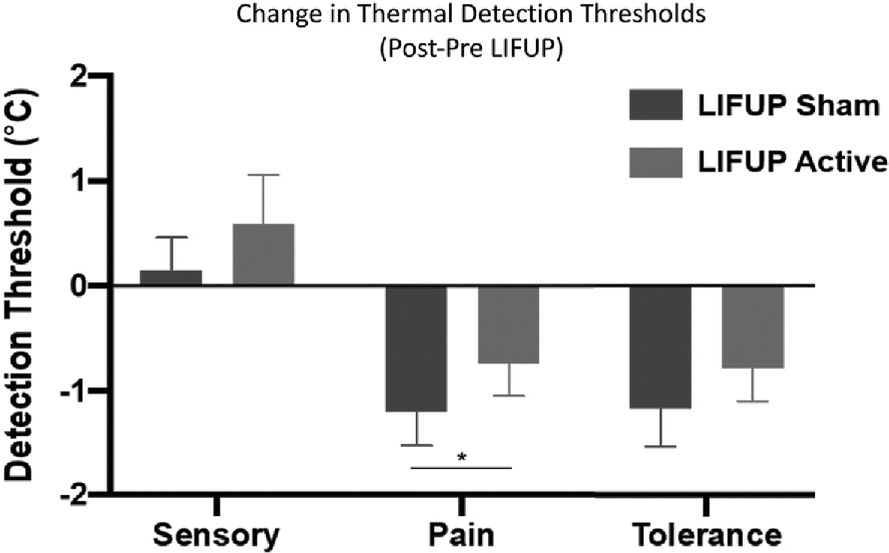
Immediate Hand Pad Pain Ratings in the Scanner
Integrity of the Blind
Discussion
Limitations and Future Study Considerations
Conclusions
Acknowledgements
Footnote
References
Information & Authors
Information
Published In
History
Keywords
Authors
Competing Interests
Funding Information
Metrics & Citations
Metrics
Citations
Export Citations
If you have the appropriate software installed, you can download article citation data to the citation manager of your choice. Simply select your manager software from the list below and click Download.
For more information or tips please see 'Downloading to a citation manager' in the Help menu.
View Options
View options
PDF/EPUB
View PDF/EPUBGet Access
Login options
Already a subscriber? Access your subscription through your login credentials or your institution for full access to this article.
Personal login Institutional Login Open Athens loginNot a subscriber?
PsychiatryOnline subscription options offer access to the DSM-5-TR® library, books, journals, CME, and patient resources. This all-in-one virtual library provides psychiatrists and mental health professionals with key resources for diagnosis, treatment, research, and professional development.
Need more help? PsychiatryOnline Customer Service may be reached by emailing [email protected] or by calling 800-368-5777 (in the U.S.) or 703-907-7322 (outside the U.S.).
